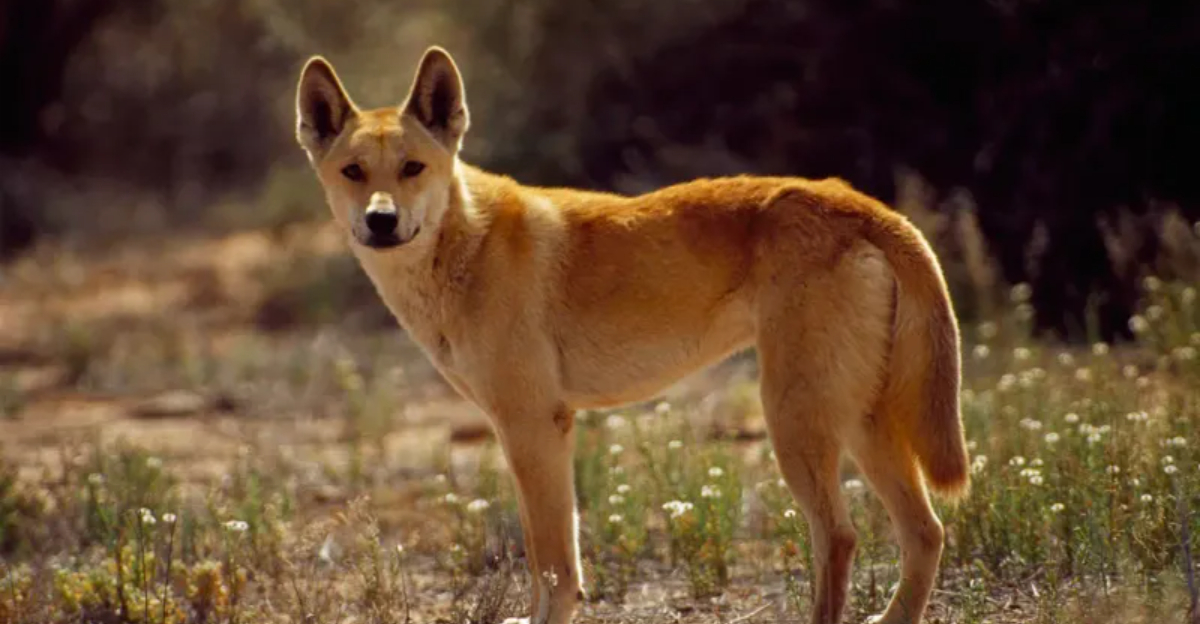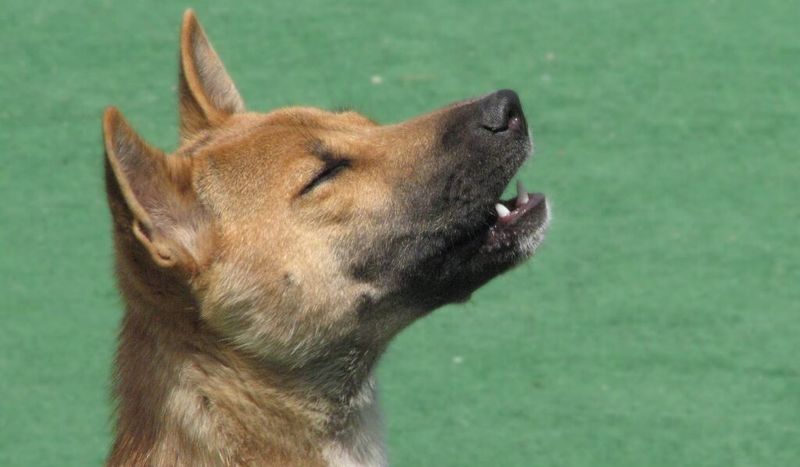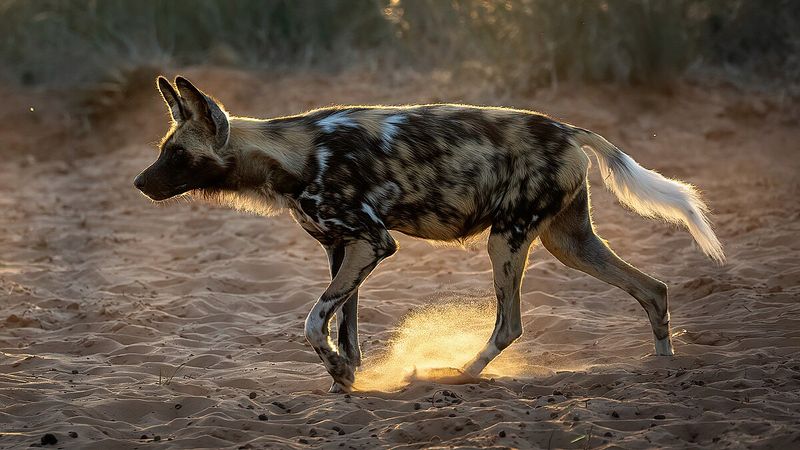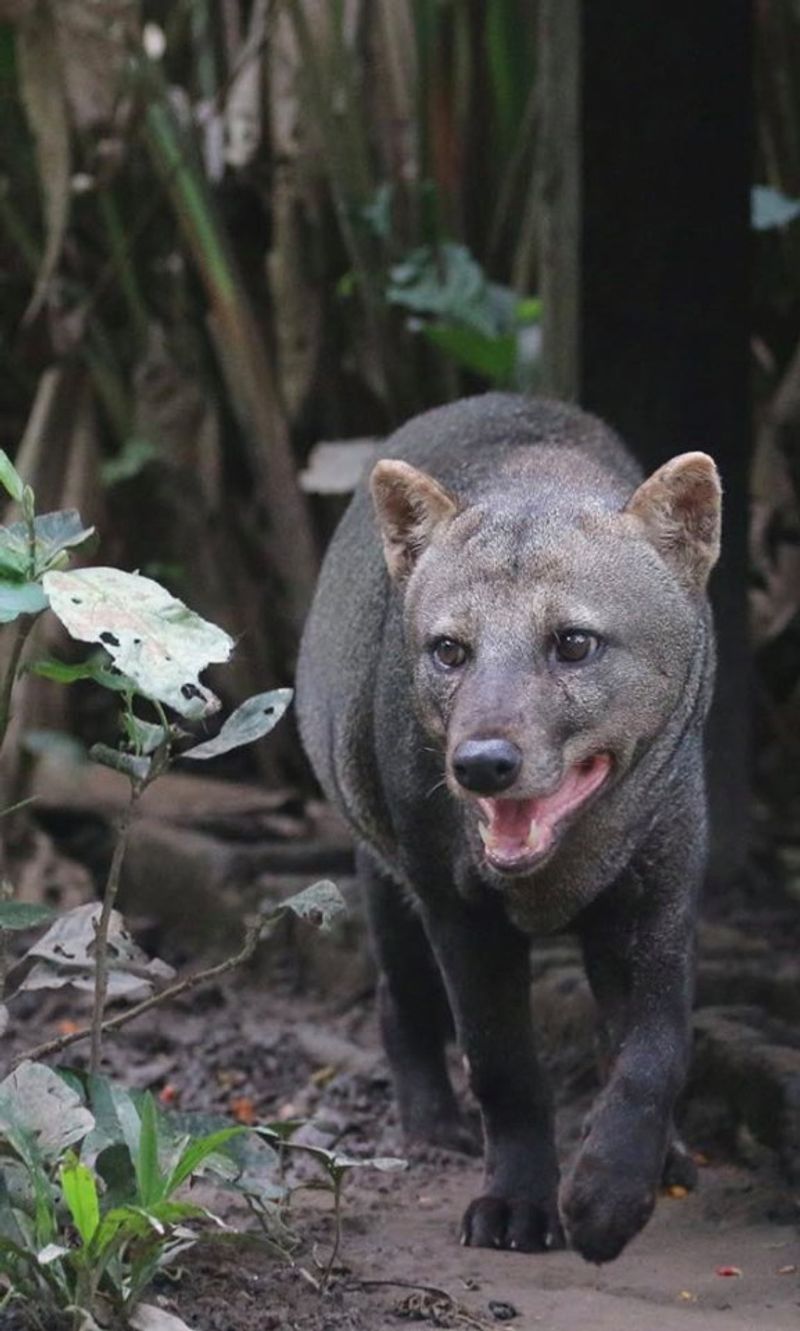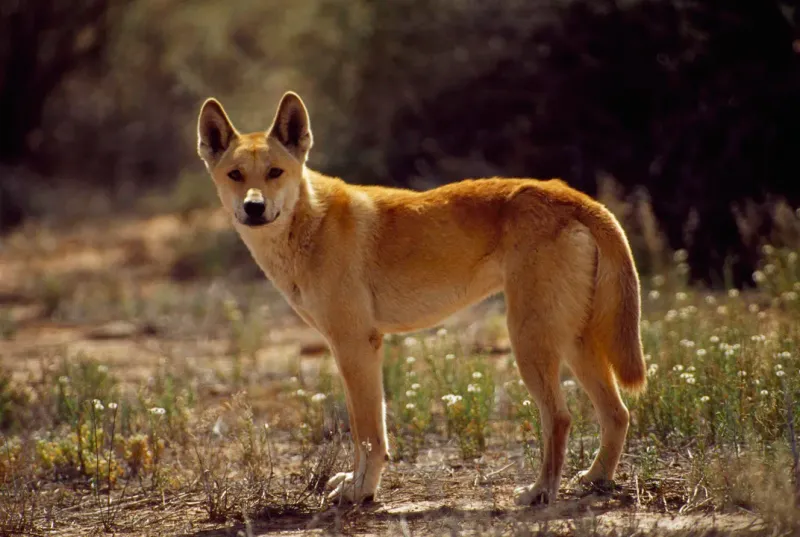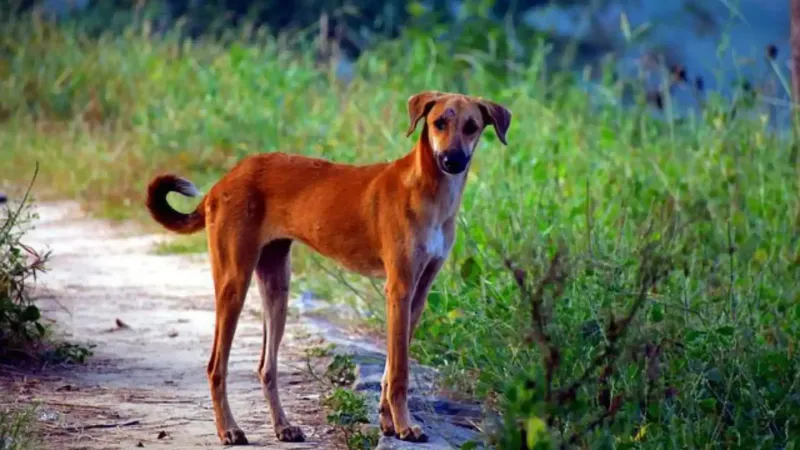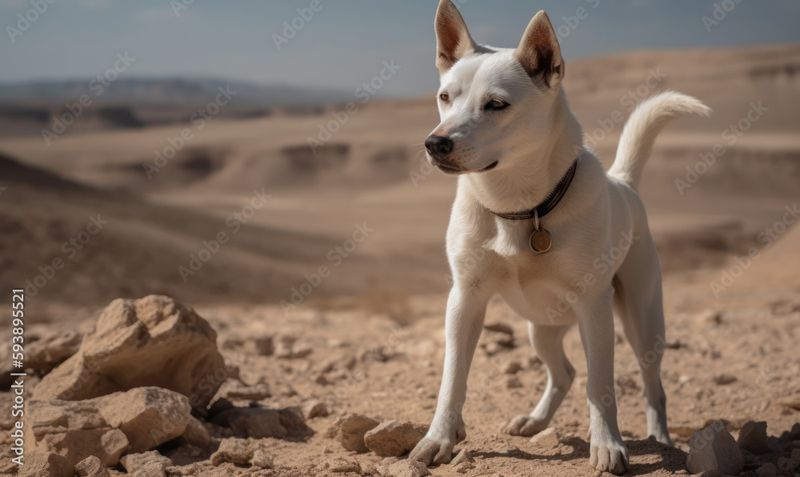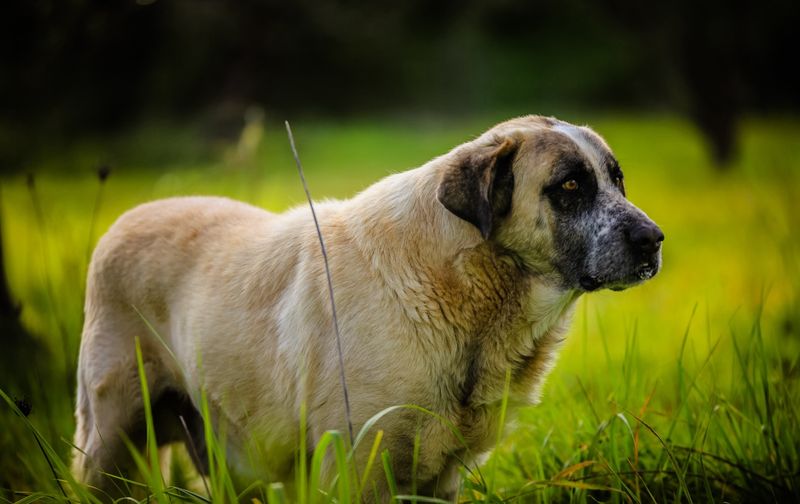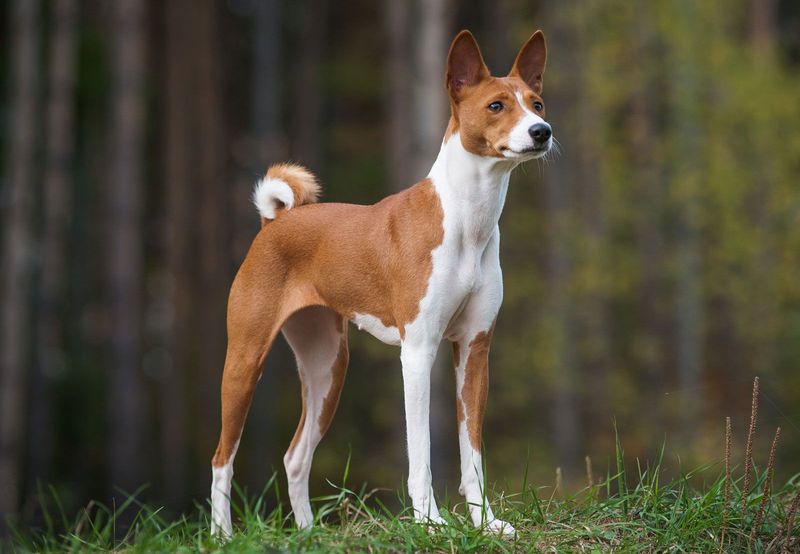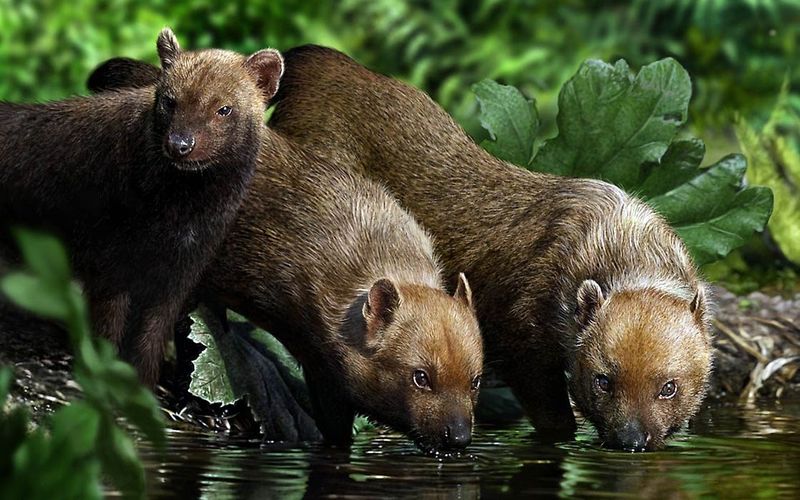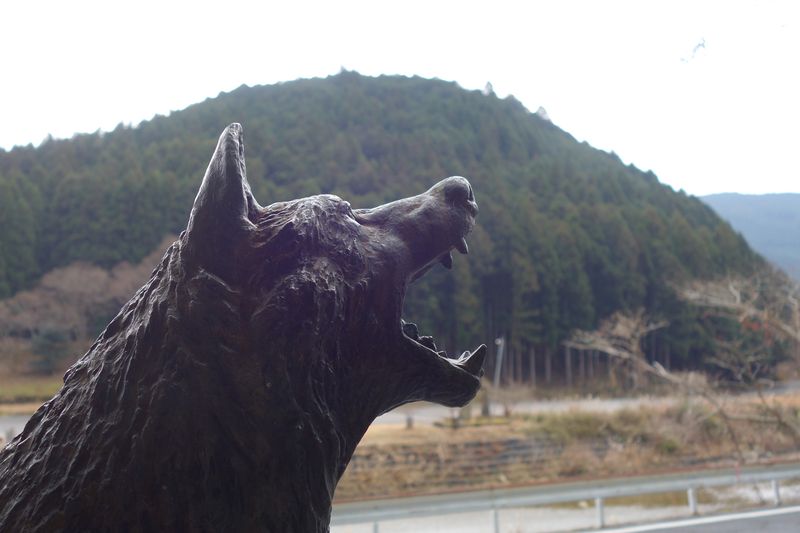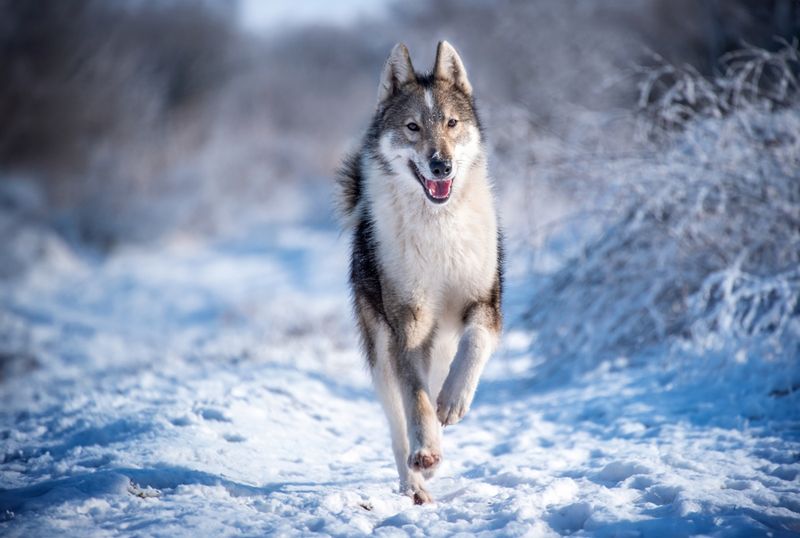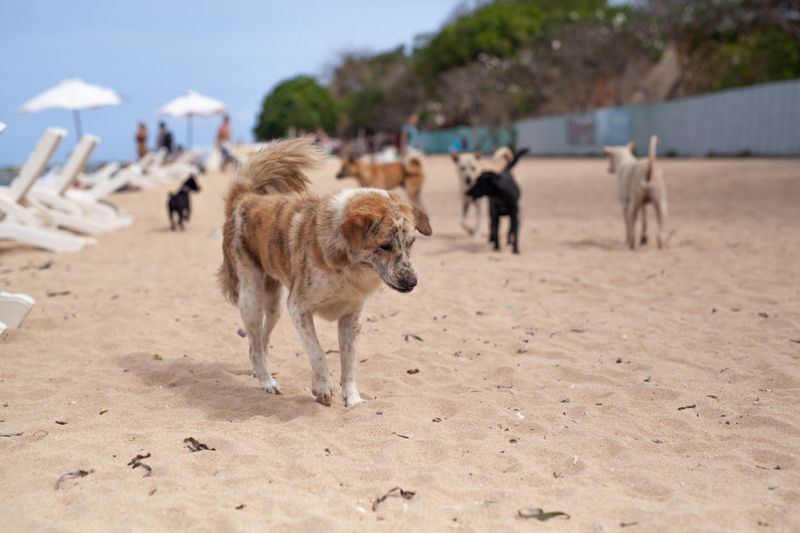Explore the fascinating world of wild dog populations that remain outside the realm of traditional dog breeds. These unique populations have developed independently, adapting to their environments and contributing to the biodiversity of their regions. Discover their stories, distinct characteristics, and the role they play in their ecosystems.
New Guinea Singing Dogs
The New Guinea Singing Dog, known for its distinctive vocalizations, is more than just a pretty voice. Found in the remote highlands of Papua New Guinea, these dogs produce a series of melodious howls, each one unique.
Their rarity and elusive nature make sightings a true treat for wildlife enthusiasts. Compact and agile, they navigate the rugged terrain with ease, displaying remarkable adaptability.
Fun fact: Their singing ability is so distinctive that it has been studied for insights into the evolution of canine communication worldwide.
African Painted Wolves
With coats as vibrant as an artist’s palette, African Painted Wolves are nature’s living masterpieces. Known for their cooperative pack behavior, these wild dogs roam the African savannahs.
Their intricate social structures and hunting strategies make them one of the most successful predators in their habitat. Each wolf’s coat is unique, a riot of colors that helps them blend into the variegated landscape.
Despite being skilled hunters, they face threats from habitat loss and human conflict, making conservation efforts crucial for their survival.
Amazonian Wild Dogs
Deep within the Amazon rainforest, the elusive Amazonian Wild Dog prowls amidst the dense foliage. Also known as the short-eared dog, this rare species is a master of stealth.
Its slender build and short ears help it navigate the underbrush, hunting small mammals and birds. Little is known about its behavior, adding an air of mystery to its existence.
Fun fact: It is one of the least studied canines in the world, prompting ongoing research to understand its ecology and conservation needs better.
Dingoes of Australia
In the heart of Australia, the iconic dingo roams as a symbol of the nation’s rugged wilderness. Lean and agile, these wild dogs have adapted perfectly to the harsh Australian landscape.
With their reddish coats and intelligent eyes, dingoes are expert hunters, often working in packs to take down prey. They play a crucial role in controlling the populations of other species, maintaining the ecological balance of their habitat.
Did you know? Dingoes have been living in Australia for over 4,000 years, and their exact origins continue to intrigue researchers worldwide.
Indian Pariah Dogs
Often seen wandering the bustling streets and quiet villages of India, the Indian Pariah Dog is a true survivor. Adapted to diverse environments, these dogs have existed for thousands of years.
With their keen intelligence and hardy constitution, they thrive in urban and rural settings alike. Their loyalty to humans is legendary, often forming bonds with those who care for them.
Did you know? Genetic studies suggest they are one of the oldest dog breeds, dating back to ancient times, yet they remain unclassified as a formal breed.
Carolina Dogs
Dubbed the “American Dingo,” the Carolina Dog roams the southeastern United States’ forests. With their ginger coats and sharp intellect, they are a testament to nature’s resilience.
Once wild, some have adapted to life with humans, yet many still thrive independently in the wild. Their survival instincts are sharp, honed over centuries of evolution.
Fascinating fact: DNA evidence links them to ancient Asian breeds, suggesting an intriguing prehistoric migration story across the Bering land bridge.
Canaan Dogs of the Middle East
In the arid landscapes of the Middle East, Canaan Dogs stand as symbols of survival. These adaptable dogs have lived alongside humans for millennia, guarding herds and settlements.
Their keen senses and unwavering loyalty make them excellent companions in harsh environments. Despite domestication, their wild instincts remain, evident in their independent nature.
Intriguingly, Canaan Dogs were used as guard dogs during World War II, showcasing their versatility and enduring legacy.
Portuguese Rafeiro
The Portuguese Rafeiro, or Alentejo Mastiff, stands as a guardian of the Iberian countryside. Known for its size and strength, this dog is a formidable protector of livestock.
While their demeanor can be imposing, they are gentle with those they trust, showing an unyielding dedication to their role. Their thick coats protect them against the elements, allowing them to thrive in varied climates.
Fun fact: They are an ancient breed, with roots tracing back to Roman times, reflecting a rich heritage intertwined with the history of Portugal.
Basenji of Central Africa
Known as the “barkless dog of Africa,” the Basenji is a marvel of adaptation. Originating in Central Africa, this breed communicates through unique yodel-like sounds called “baroos.”
Their alert expressions and high tails give them a distinguished appearance. Agile and curious, they thrive in dense forests, exhibiting extraordinary hunting skills.
Interestingly, Basenjis have been depicted in ancient Egyptian art, pointing to their storied presence in history as cherished companions and hunters.
South American Bush Dogs
Small but spirited, South American Bush Dogs are social creatures found in the continent’s dense forests. These compact canines exhibit fascinating pack dynamics, often hunting as a cohesive unit.
Their webbed feet make them excellent swimmers, a useful trait in their often-waterlogged habitats. Though not widely known, bush dogs are integral to their ecosystems.
Did you know? Despite their small size, they can take down prey much larger than themselves, a testament to their teamwork and tenacity.
Japanese Wolf Legends
Although extinct, the Japanese wolf lives on through folklore, symbolizing strength and protection. Revered in ancient Japan, these wolves were believed to guard travelers, and their howls were seen as sacred.
Their small stature and unique characteristics distinguished them from other wolves. They thrived in the mountainous regions, adapting to the rugged terrain.
Despite their disappearance, they remain a cultural icon, immortalized in tales and art, reflecting their revered place in Japan’s history.
Siberian Laika Dogs
Enduring the harsh Siberian winters, Laika Dogs are hardy hunters and loyal companions. Known for their endurance and versatility, they thrive in the frigid landscapes.
With keen senses and a strong build, they have been used historically for hunting and sledding. Their independence and intelligence make them highly valued in remote communities.
Fascinatingly, Laikas were the first dogs in space, paving the way for human space exploration, a testament to their resilience and adaptability.
Bali Street Dogs
Bali Street Dogs, a familiar sight on the island, embody adaptability and resilience. Often seen wandering beaches and streets, they are an integral part of Balinese culture.
Their diverse appearances reflect a mix of genetics, yet they maintain a distinct identity. Known for their intelligence and independence, they navigate the bustling island life with ease.
Did you know? Efforts are underway to protect and preserve these dogs, recognizing their role in Bali’s unique cultural landscape.
